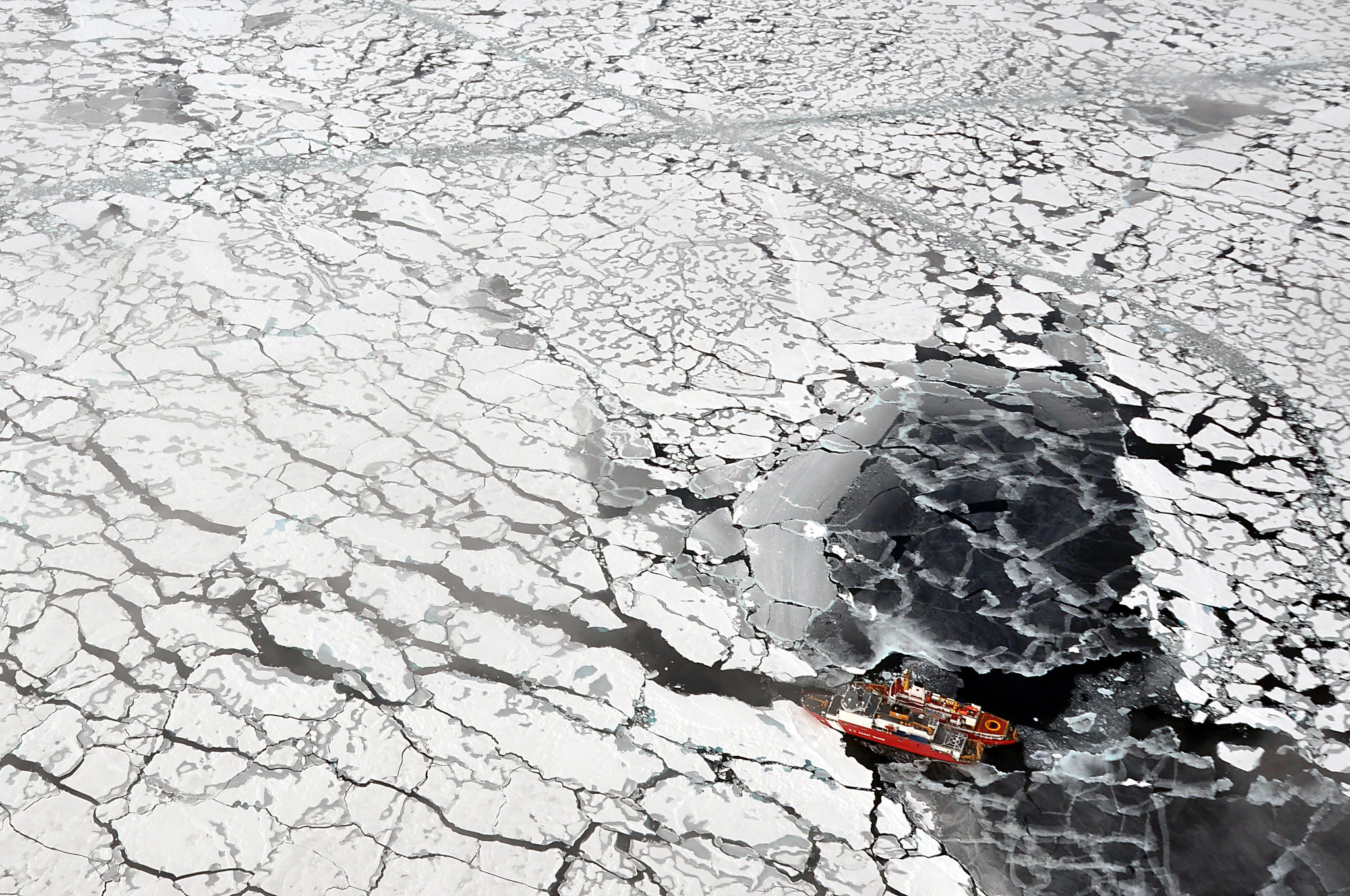The past six years have all been the hottest on record in the Arctic
Arctic ice is quickly growing younger, thinner, and more fragile because of warmer temperatures caused by climate change.

Record-breaking temperatures are wreaking havoc upon the land and sea in the Arctic, according to the annual Arctic Report Card from National Oceanic and Atmospheric Administration.
The report card was released Tuesday at the American Geophysical Union’s annual meeting in San Francisco. NOAA first began releasing its annual peer-reviewed Arctic Report Card in 2006 to warn of rapid changes in the region and to highlight a few specific trends each year.
This year, the report focused upon extraordinary changes in the Bering Sea, particularly in the past two years. And for the first time, Indigenous residents of the Arctic presented their own perspectives directly in the report.
Changes to land and sea
Among the reports highlights, researchers found that surface temperatures in the Arctic were the second-highest ever observed in 2019; and the past six years have all seen the highest temperatures since record-keeping began.
This has immediate consequences for both the land and sea in the Arctic, the report’s authors point out.
On land, several areas are growing greener, the snow cover is melting earlier and more extensively than before, and permafrost is thawing, damaging infrastructure and releasing carbon into the atmosphere. The Greenland ice sheet saw a massive melt in 2019, similar to the previous record year of ice loss in 2012. The melt began early, in April, and reached nearly all (95 percent) of the sheet.
Meanwhile, the decline of Arctic sea ice is “directly linked” to warmer air temperatures, the authors of the report write. At the end of this summer, sea ice extent in the Arctic was tied for the second-lowest ever recorded.
“The 13 lowest summer ice extents have been in the past 13 years,” Donald Perovich, one of the report’s authors, said in a press conference.
In particular, the oldest, thickest multi-year ice is vanishing quickly. In March 1985, one-third of the ice covering the Arctic Ocean was at least four years old, having withstood four or more summers of melt. In March 2019, old ice accounted for only 1.2 percent of the entire Arctic sea ice cover.
That means most of the sea ice blanketing the Arctic is first-year ice that is far more likely melt in the summer. Older ice is usually thicker and more resilient to changes in the air and sea, but younger Arctic ice is younger, thinner, and more fragile.
In December 2018, the National Snow and Ice Data Center estimated that older sea ice covered 2 million square kilometers that year. But that figure dropped dramatically to 0.09 million square kilometers in March 2019, according to this report.
This decline in multi-year ice has been “significant,” says John Farrell, executive director of the U.S. Arctic Research Commission.
If the remaining multi-year ice melts, the Arctic Ocean would be much closer to seeing a completely ice-free summer.
The sea itself is also warming, particularly in places where the ice has melted and the darker waters absorb more heat — about 10 times more — than brighter ice-covered waters do.
In August of this year, waters in the Beaufort, Chukchi and Laptev seas and Baffin Bay were as much as 7 degrees Celsius warmer than in August 1982–2010.
The warmers waters create wide-ranging changes in marine and ecosystems, from fisheries to algae to birds.
Fish stocks in the deep waters of the Bering and Barents seas have undergone “rapid community and population shifts,” with walleye pollock and Pacific cod moving north in search of cooler waters.
Algae is growing off of Arctic coasts, in both water and ice, more rapidly than ever — especially in the Eurasian Arctic, Barents Sea, and Greenland Sea. In May of this year, for example, a long stretch of the sea ice edge in the Greenland Sea saw about 18 times more chlorophyll-a concentrations than in May 2003–2018.
And the breeding population of the ivory gull in Canada’s Arctic has dropped by 70 percent since the 1980s, likely due in part to sea ice loss.
The Bering example
The Bering Sea offers a “disquieting” example of many of these changes, the report’s authors write.
In 2018 and 2019, sea ice in the Bering dropped to record lows — covering about 30 percent of the area it once did, the report says.
This has had rapid and unprecedented effects for the Bering region, which supports an “exceptionally productive ecosystem.” That included numerous seabirds and marine mammals, the subsistence harvests upon which Indigenous communities depend, and more than 40 percent of the total catch of fish and shellfish in the United States — a $1 billion business each year.
Farrell, who was not affiliated with this report, points out that a largely ice-free Bering wasn’t forecast to occur until about 2050.
“NOAA and partners in the federal government need to double down on research efforts to better observe and understand what’s going on, so that we can try to adapt to this change, and the impacts it’s having on Alaskans who live in the region, and the billion-dollar Alaskan seafood industry,” he told ArcticToday.
For the first time, the NOAA report card included contributions directly from Arctic Indigenous leaders.
“The world from our childhood is no longer here,” several Alaska Native leaders from the Bering Sea region write in the final chapter of the report. “What steps will we take to care for our environment, to conserve, and to spark real action to address climate change?”